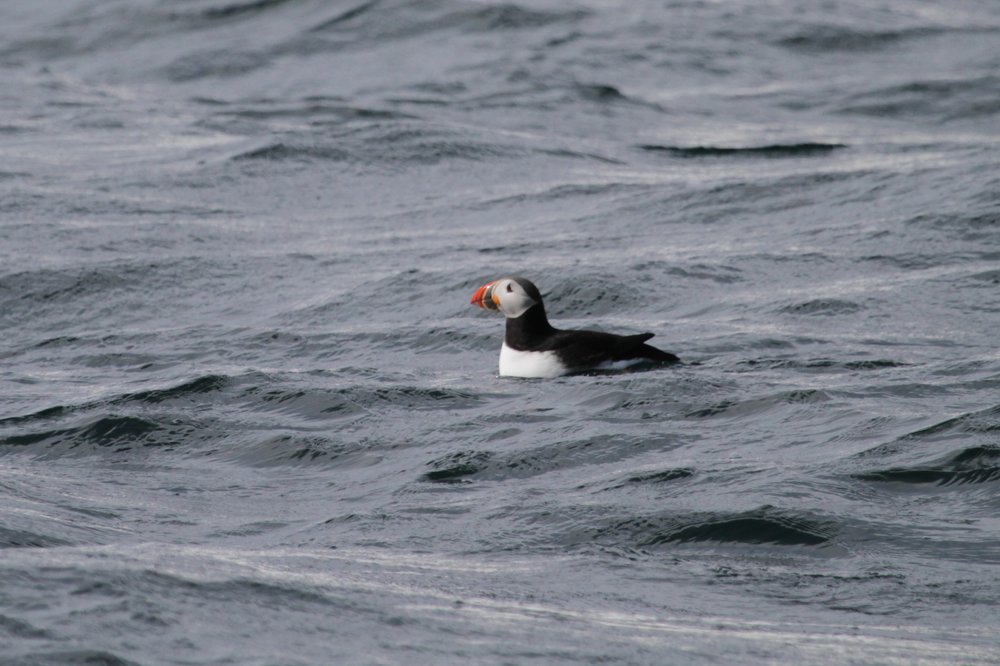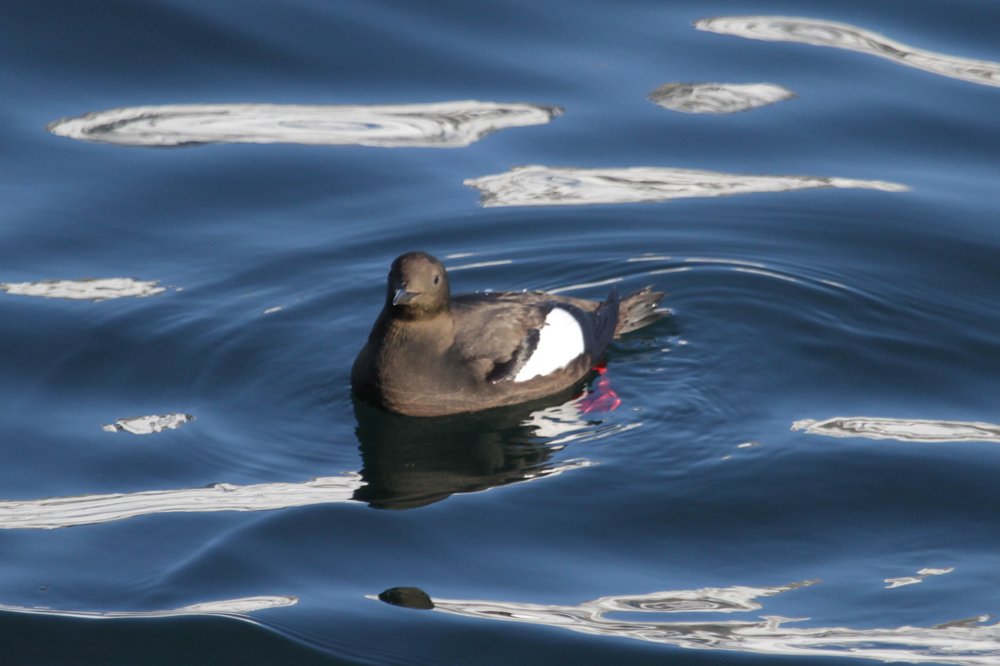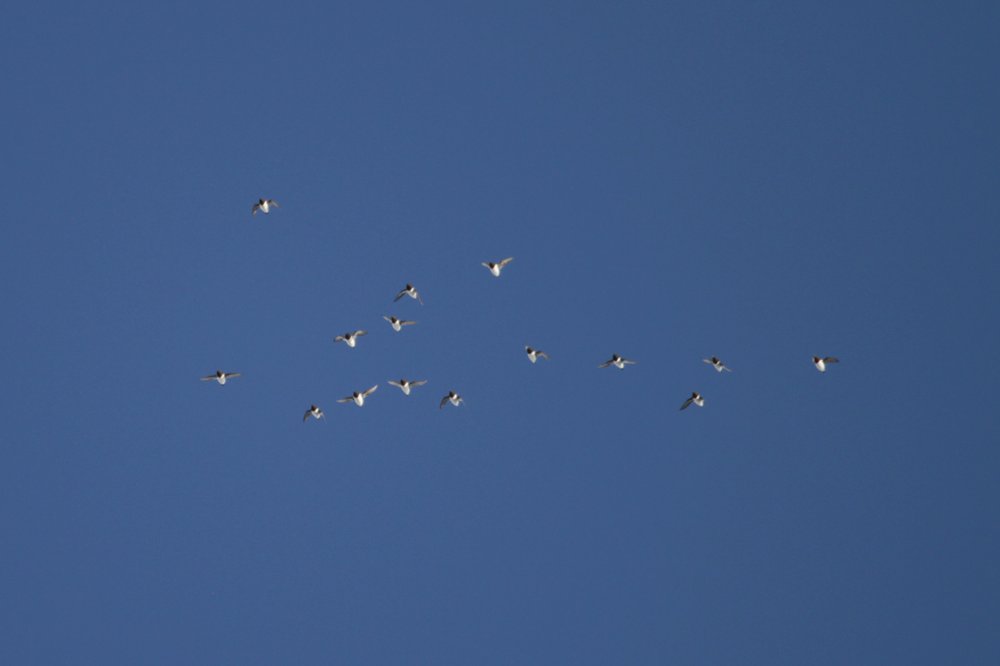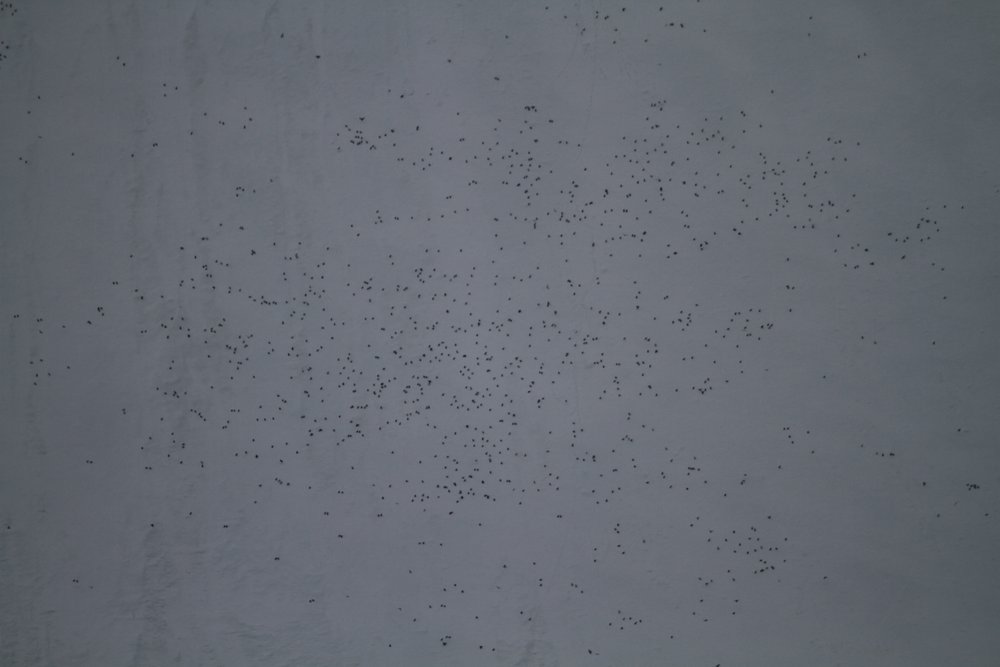
At the top of the short hill stood Sara Blue with her husky dog Nemo. I wondered if, standing there scanning into the distance for bears, she was bored or content. Did she want conversation or to be left with the silence of the Arctic landscape?
That silence was punctuated by the calls of the Little Auks (known in the States as Dovekies) on the mountainside above us. I could see the flurry of activity of the auks, skimming left and right in small flocks. Their busyness was dizzying, dots disappearing against a craggy mountainside, or landing on a flank of the mountain, like pepper sprinkled to season to the snow. They seemed to know what they wanted, where they were going. Self preservation and propagation—that is the whole story.

She hesitated a moment and leaned back on her hips, her legs spread wide. She was wearing a thick wool sweater and blue pants. Her gun rested easy on her shoulder.
“It’s not a sound that belongs here,” she said.
I smiled. She was right, the cheerfulness of the birds seemed out of place in this vast, austere landscape tinted with grays and whites. Below me the ship sat quiet at anchor in a green-gray sea.
The calls made me think of a warmer climate, of a bazaar in North Africa. I thought of the chase scene in Casablanca, the chaos of cars and voices calling out with things for sale. These little black and white birds did not have narrow streets to negotiate but the entire side of a mountain on which to sell their wares. They were dots of vibrant life coming together in a “loomery” (a group of Auks can also be called a colony or a raft—but loomery, can’t beat that).

When I travelled to Alaska, seeing a Dovekie wasn’t a given. On the island of Gambell, we scanned a high cliff laced with Least and Crested Auklets to find one lone Dovekie. And then a few months later, one showed up at home, in New York. The call went out to all of the local birders, the little bird a sensation. Perhaps it had been blown off course from Greenland, home to the largest breeding ground of Dovekie’s (about 30 million). Where Dovekies spend the winter is out in the open ocean, at the edge of the ice. They come to land only to create life.
